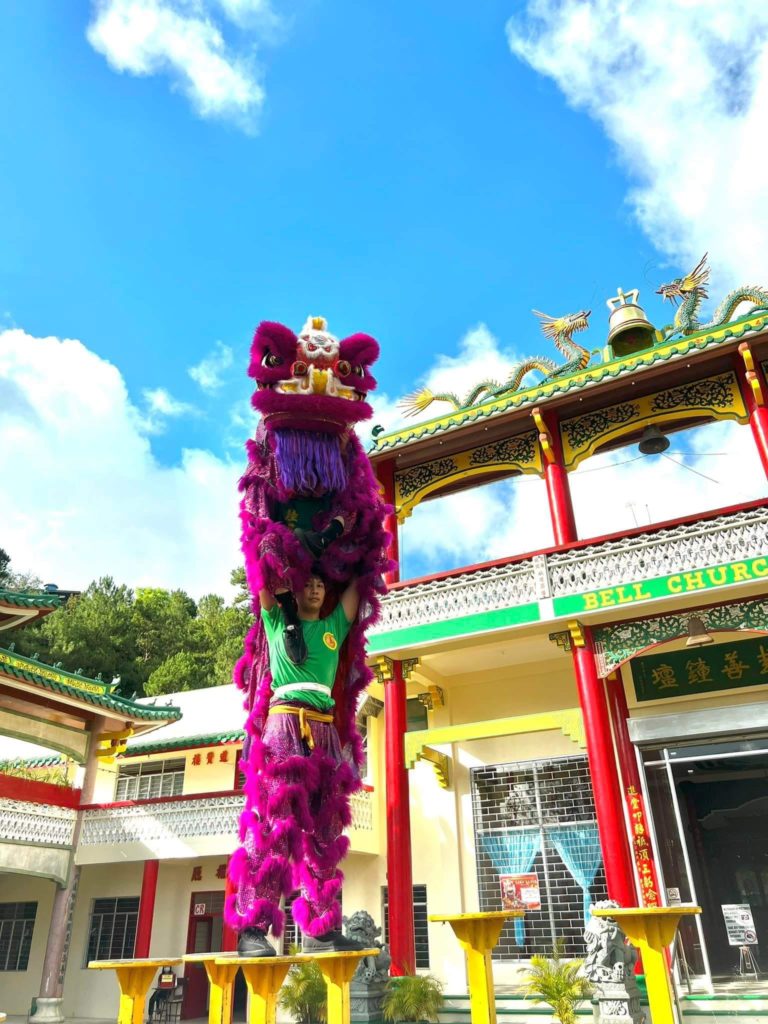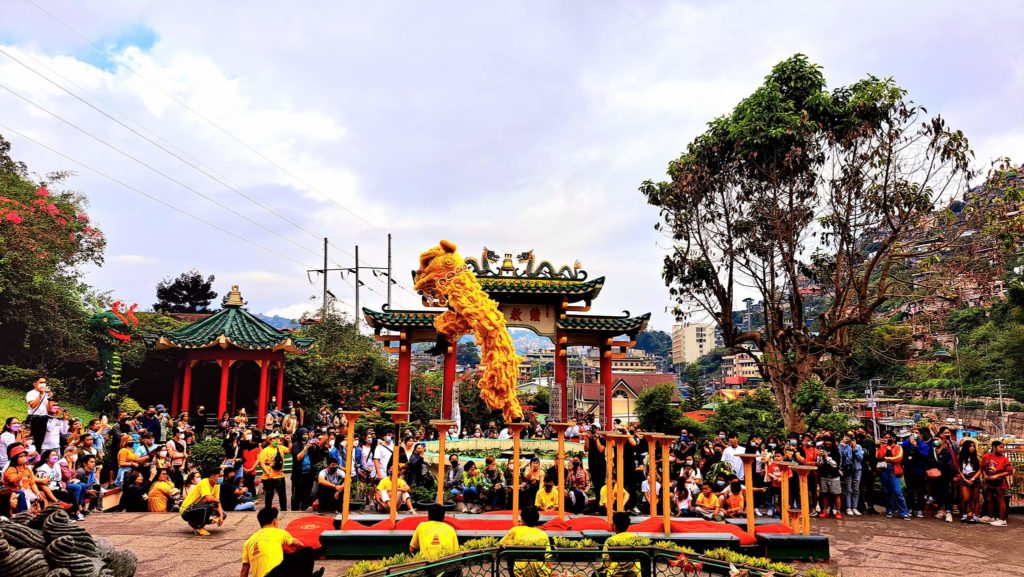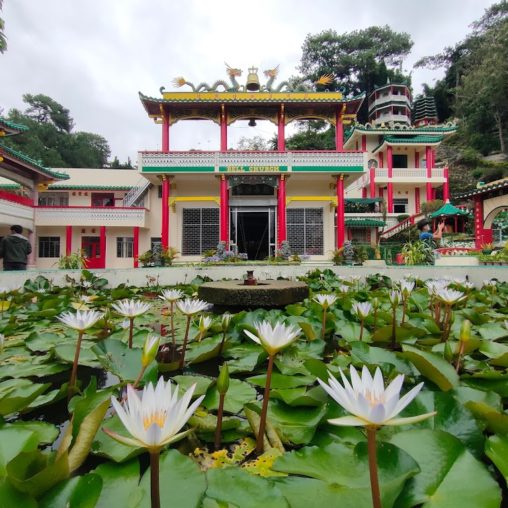Aside from having 14 chapters all over the Philippines continuing the sacred teachings, it has established a group devoted for the practice of the martial arts, lion and dragon dance – The Bell Church Athletic Club
Bell Church sits atop the borders of Baguio City and the municipality of La Trinidad in Benguet Province, thus referred to as the jurisdiction marker, greeting both neighbors since the 60’s.

The church’s exteriors are bedecked with intricate oriental designs from the gate, pagodas, and to the center. Dragons are seen everywhere welcoming visitors to a harmonious balance of traditions and innovations of both native and foreign ideas and religious thoughts.
The church’s name was derived from the practical function of a bell – to call for attention. Longing for a center, where the early Chinese immigrants can practice their religion, they used a dining hall of a restaurant after business hours. This, however, wasn’t enough to cater to the growing Chinese community of Bellism and so in 1957, they rented a lot in Kilometer 6 La Trinidad Valley which now houses the original site of Bell Church.
With the generous help of the Chinese benefactors, a new and bigger location was set up along Kilometer 3, a testimony of faith, perseverance, determination and hard work.
Bell Church has five principal patron saints which symbolize Taoism, Buddhism, Christianity, Islam and Confucianism. With this, everyone is welcome to pray and seek guidance regardless of religion, race and social status.
Aside from having 14 chapters all over the Philippines continuing the sacred teachings, it has established a group devoted to the practice of the martial arts, lion and dragon dance – The Bell Church Athletic Club.

Today, there are around 60 members practicing different disciplines of the art with different age groups which starts as early as 9 years old.
The Chinese Lion Dance is customarily performed during the Lunar New Year to herald in the new year and bring prosperity, good luck and peace. It is also performed at business openings, weddings, birthdays and other celebratory events bring peace and good fortune. I was also told that they have been performing during April of every year for the past ten years.
The lion dance is not only looked upon as the skillful display of strength and artistry, but as the discipline of mind and body. Externally, it is a full body workout, enhances health and requires skill and agility. It is also the cultivation of inner strength and self-discipline to receive life’s challenges with grace and elegance. The transmission of the lion dance is the conveyance of tradition, lineage, skill and relationship. It requires respect, loyalty and reverence to the Shifu, Troupe Leader, fellow students and lion head.

The Lion Dance is enacted by two dancers. One handles the head, made out of strong, but light materials like paper-mache and bamboo. The other plays the body and the tail under a cloth that is attached to the head. A “Buddha” teases and leads the lion with a fan. The Buddha figure is significant because it represents a temple monk, who watches over and leads the lion.
The lion is also accompanied by musicians, playing a large drum, cymbals, and a gong. The music follows the moves of the lion and symbolizes the roar of the lion. The drum follows the lion, the cymbals and the gong follow the drum player.
Dragon dance is a traditional dance form in Chinese culture. The dragon represents wisdom, power and wealth. Like the lion dance it is most often seen in festive celebrations. It is believed that performing the dragon dance scares away evil spirits and all the bad luck associated with them, and brings in good luck and wealth instead. This is why the dragon dance is very popular during Chinese New year as well as during other auspicious occasions such as weddings and other festivities.
The Bell Church Athletic Club is inviting all interested individuals to join in and learn the art of the drums, lion and dragon dance.
The church is asking visitors to respect its premises by avoiding too much noise, not stepping on its gardens and ledges. And by NOT taking any photos inside the temple.
This tourist destination opens at 9AM to 6PM.



Nicely done Chino.
Thank you tita 🙂